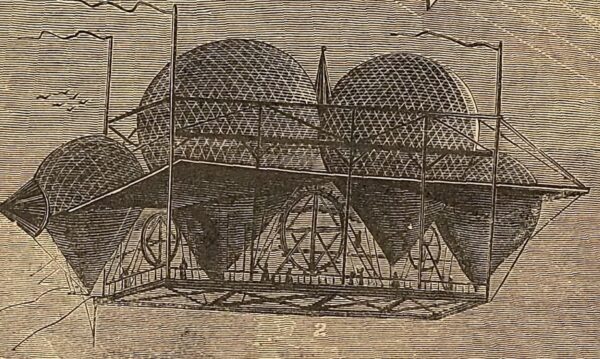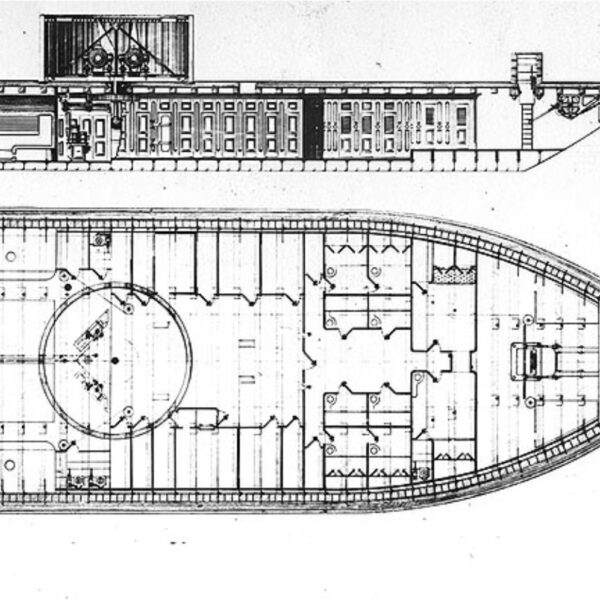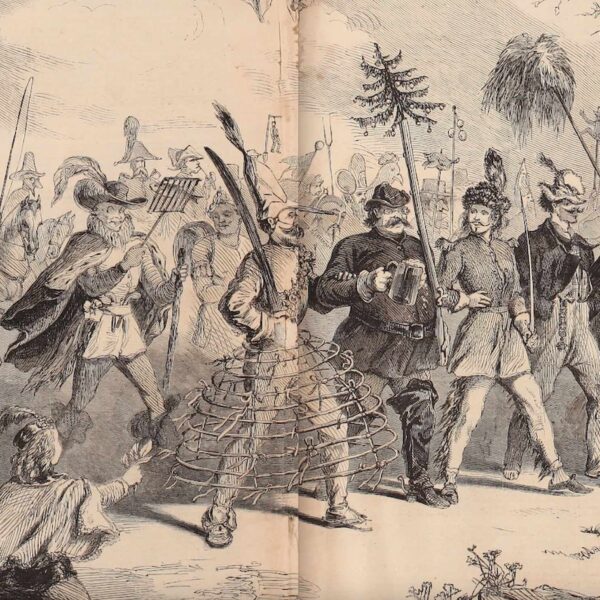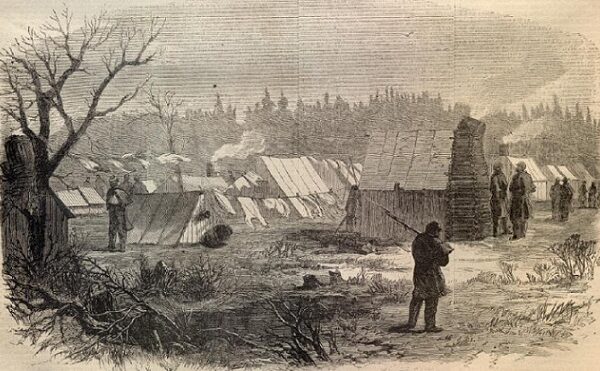In a 19th-century world free from blogs, social networking sites, television, and cell phones, Frank Leslie’s Illustrated Newspaper thrived. Part picture, part story, Leslie’s publications combined visually stimulating engravings with journalistic articles to create one of the most popular illustrated newspapers of the 1860s. Leslie’s Illustrated invited its audience not just to read, but also to examine an array of images that brought characters and plots into their parlors like never before. The sensational pictures had the power both to entertain and horrify readers, packing unwieldy emotions into little images that could be understood by all.
In late 1860 and early 1861, tensions ran high as households across the North and South anticipated the next act in the nation’s unfolding sectional drama. Their communities throbbed with rumors, gossip, and predictions. When they viewed the images below, readers were unaware of the massive conflict before them. The bloodiest war in American history was about to begin … they just didn’t know it yet.
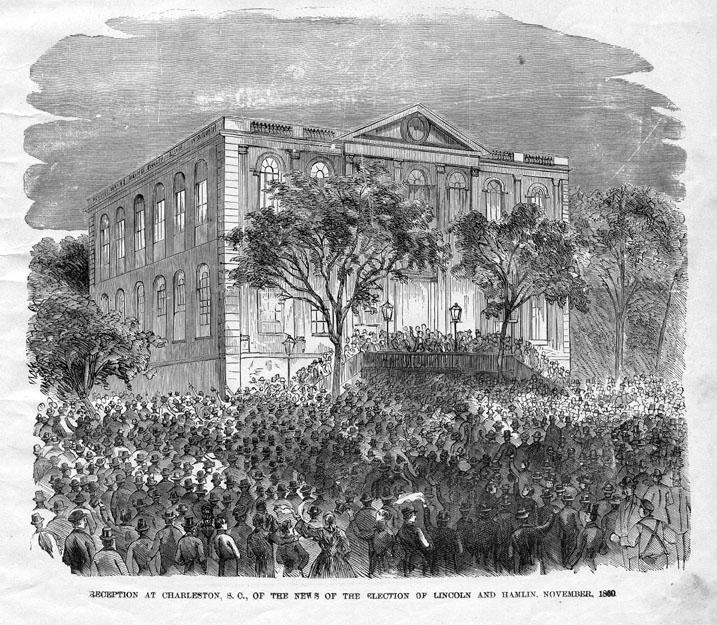
On Tuesday, November 6, 1860, the country erupted in an emotional explosion. Outbursts of fury, shock, relief, and confusion shook the nation and set presses ablaze with fiery statements about the future of the United States. Abraham Lincoln was going to be president. In this image, citizens of Charleston, South Carolina, gather to hear the election results. (Source for this and all subsequent images: Frank Leslie’s The Soldier in Our Civil War.)
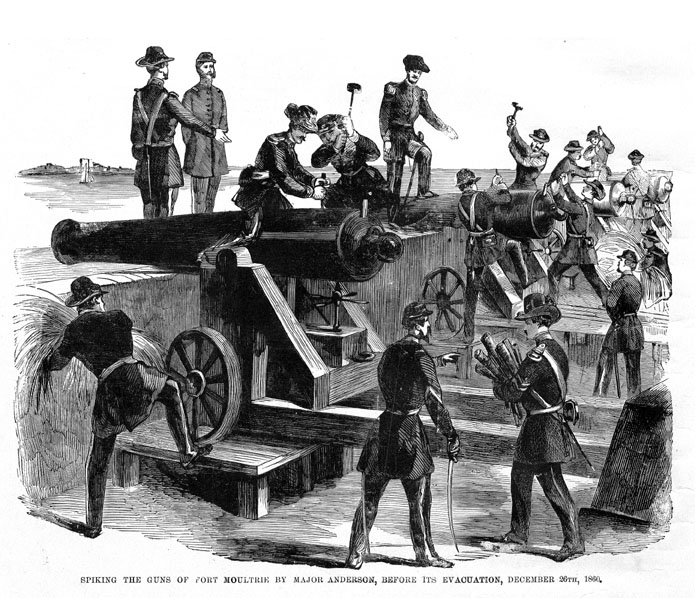
On December 20, South Carolina, unwilling to accept Lincoln as president, declared its independence from the Union. In Charleston Harbor, Major Robert Anderson, a Kentucky-born graduate of the U.S. Military Academy at West Point, planned to pull his garrison out of Fort Moultrie for the stronger Fort Sumter. They spiked the guns before leaving to make them unusable if seized by secessionist forces.
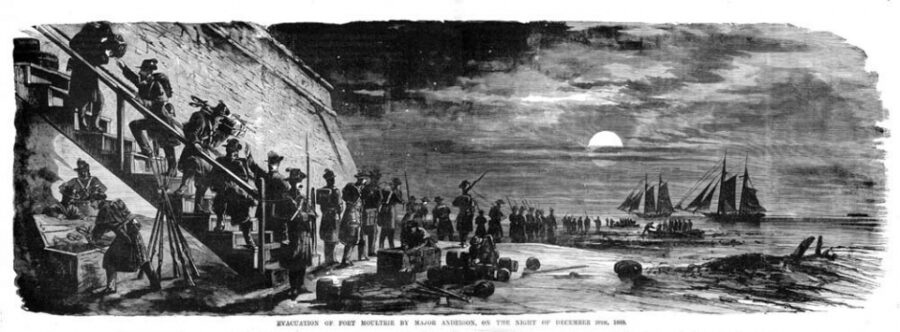
Six days later, Major Anderson decided the time had come. In the quiet of night on December 26, he cautiously moved his command from Fort Moultrie to Fort Sumter.
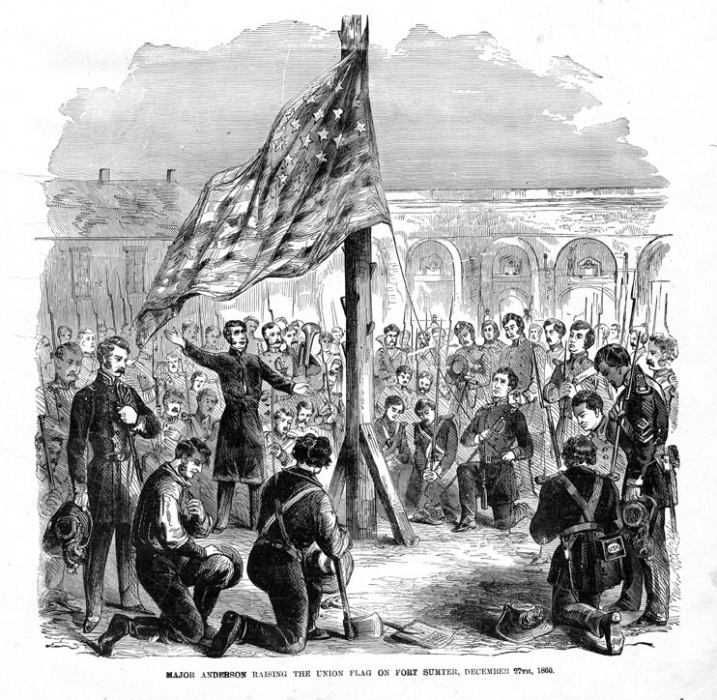
Anderson and his men arrived at Fort Sumter without a casualty and ran up the Stars and Stripes the following morning.
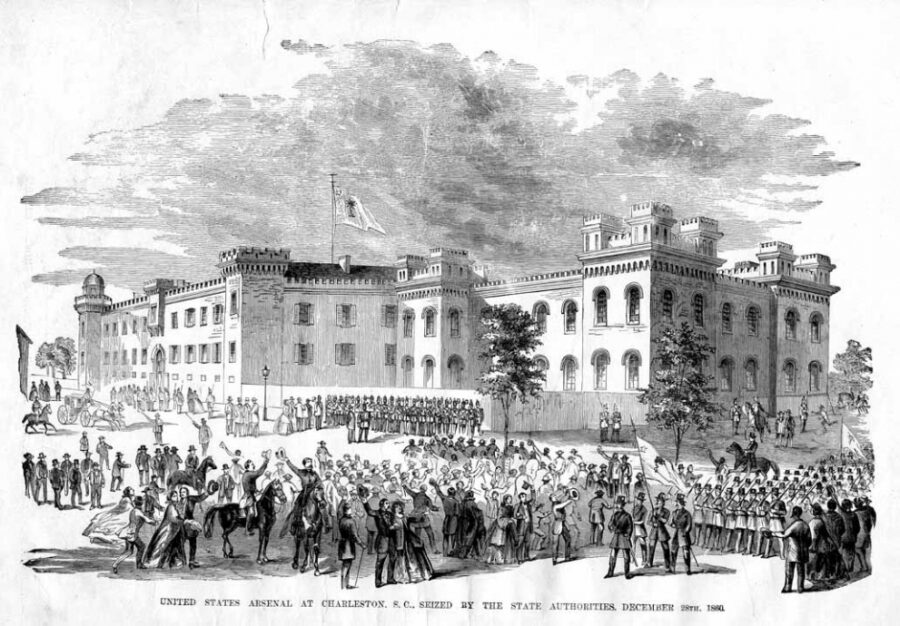
Meanwhile, the South Carolina militia seized Charleston’s U.S. Arsenal, which held small arms and ammunition.
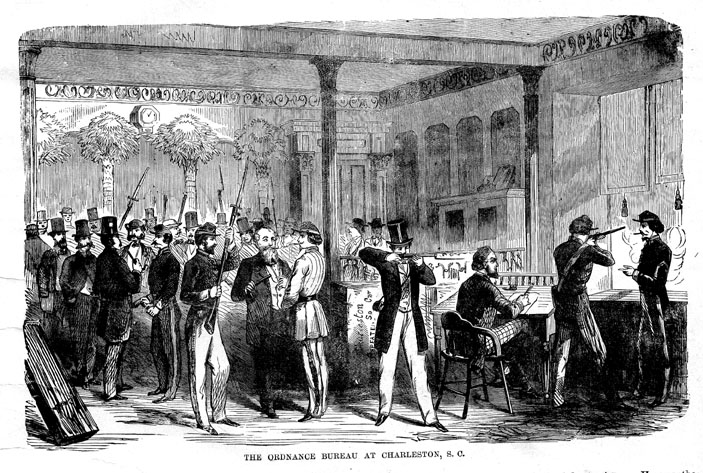
On January 11, 1861, a Confederate South Carolina demanded that Major Anderson surrender Fort Sumter to their state. He refused. In Charleston, men prepared for a fight.
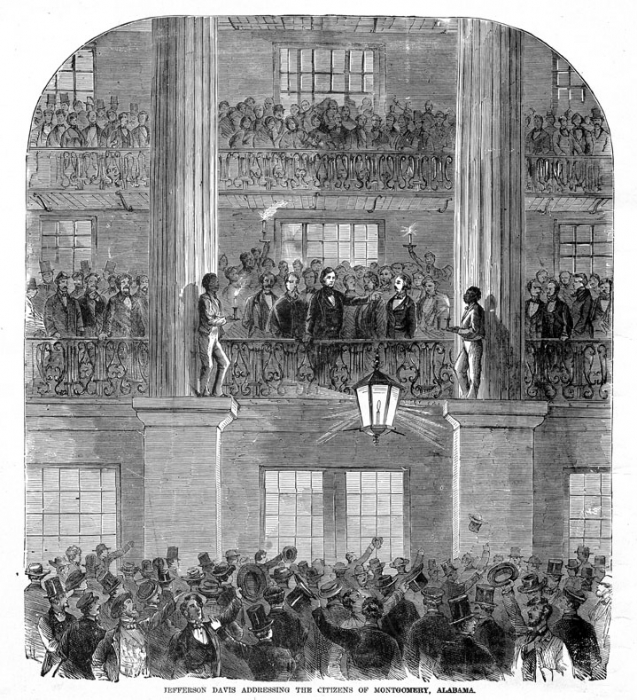
As Lincoln readied for his inauguration, on February 9, 1861, a convention of the seceded states convened at Montgomery, Alabama, selected former U.S. senator and secretary of War Jefferson Davis as the provisional president of the Confederate States of America.
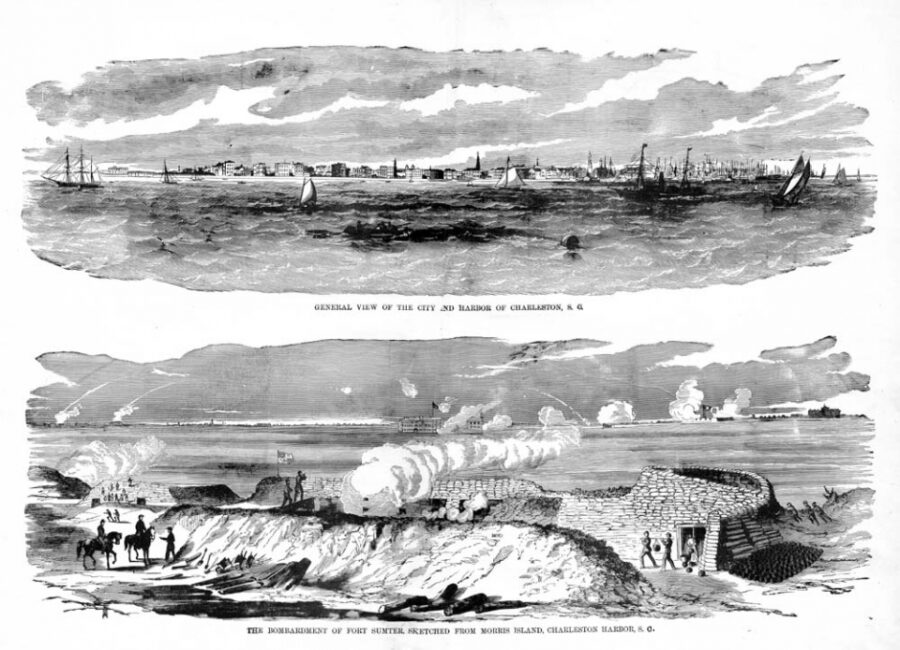
The nation soon turned its attention back to Charleston, where Major Anderson and his men still refused to surrender Fort Sumter, even though they were nearly out of provisions. Shortly after word reached the city that Lincoln had dispatched a fleet to resupply the fort, Confederate officials decided they must act. At 4:30 in the morning on April 12, the Confederate batteries that circled Sumter opened fire.
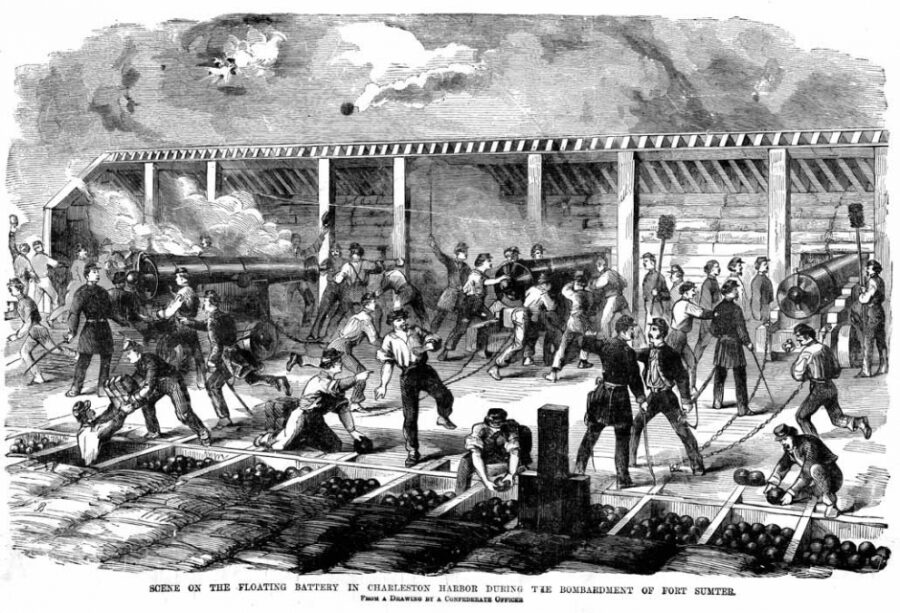
For 34 straight hours, Confederate artillerists worked their guns, launching a massive amount of shot and shell at Sumter.
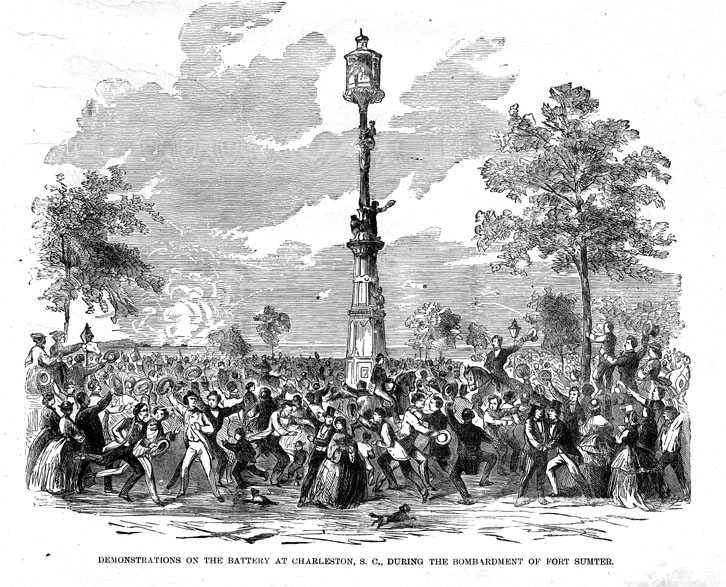
In a mob of frenzied and mixed emotion, Charlestown residents watched as the first shots of the Civil War burst through the air and filled the sky with smoke.
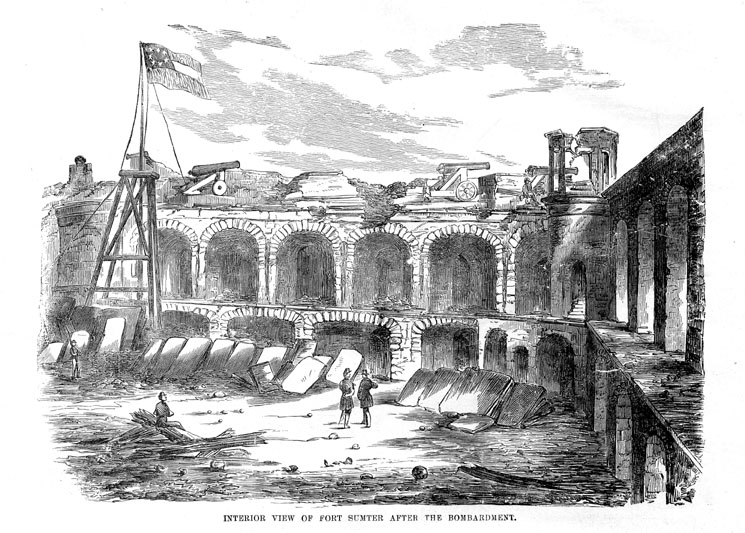
The fort on fire and his men low on ammunition, Major Anderson could hold out no longer; at 2:30 p.m. on April 14, he surrendered Sumter to the Confederates, who wasted no time running up their own flag in the battered fort. Miraculously, no one on either side had died during the bombardment.
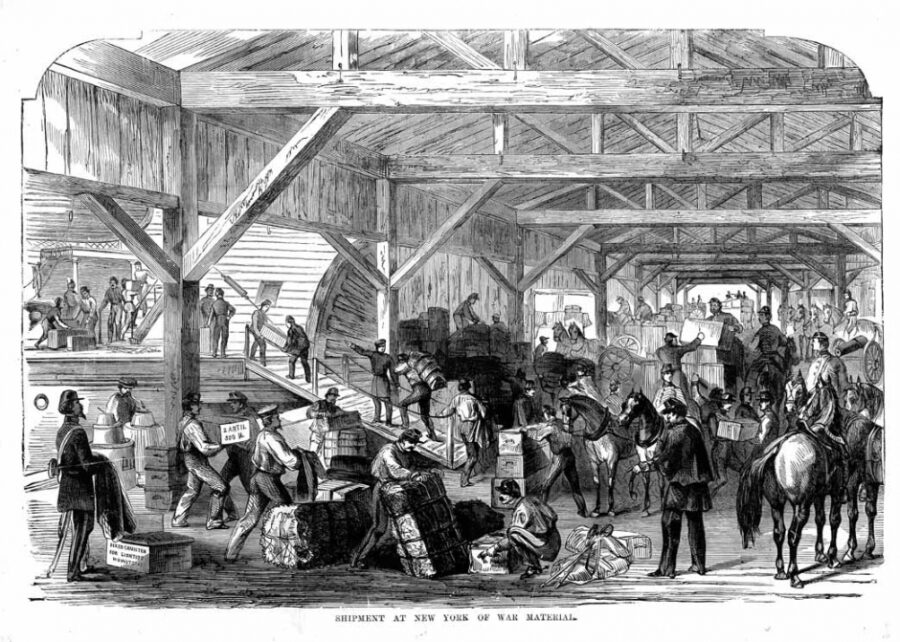
The war had officially begun. Across the country men scrambled to stockpile necessary supplies for bloody work, like guns and ammunition.
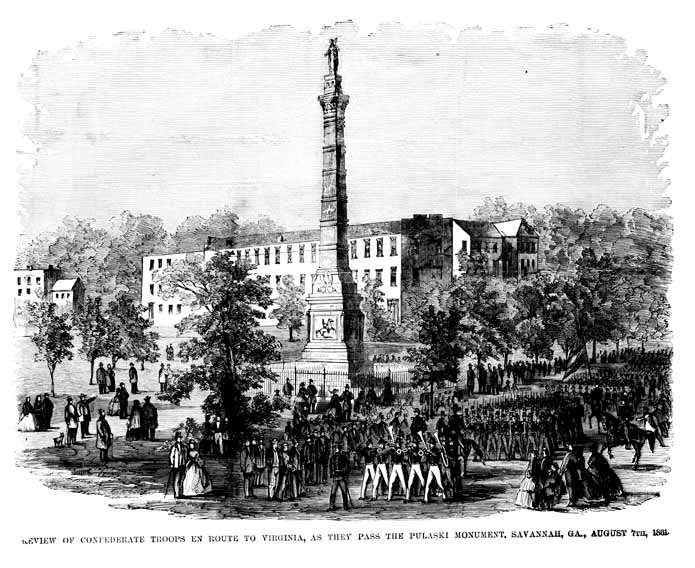
The Confederate call for troops drew thousands of young and enthusiastic southerners into the new army. Many marched north to Virginia, the home of their new Confederate capital.
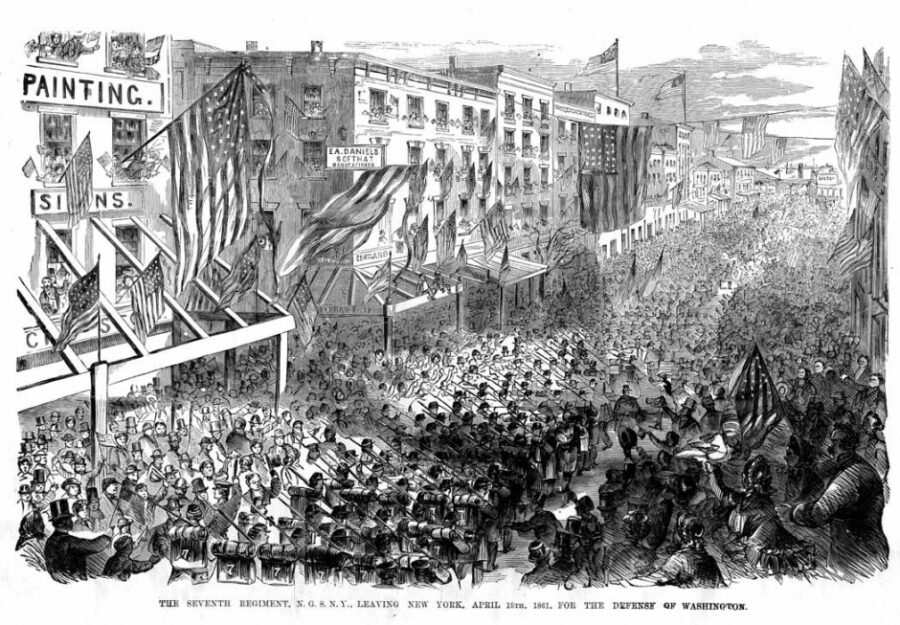
Likewise, flags waved, people cheered, and patriotic zeal filled the streets of northern cities and towns, like New York, as Union volunteers marched south.
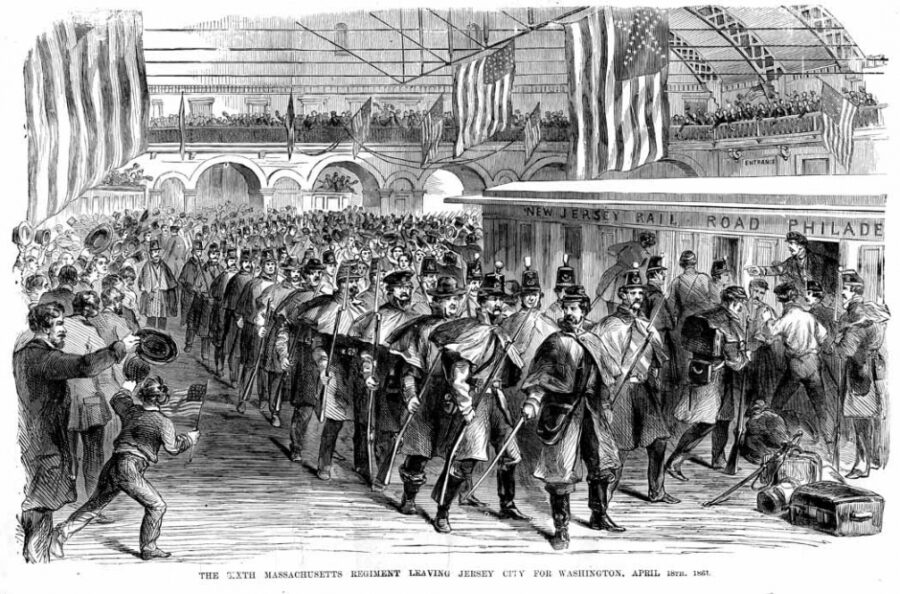
Fed, rested, and well-dressed regiments marched to an uncertain future with a great deal of confidence. Answering Lincoln’s call for troops, the men of the Sixth Massachusetts Volunteer Infantry left for Washington D.C. on April 18.
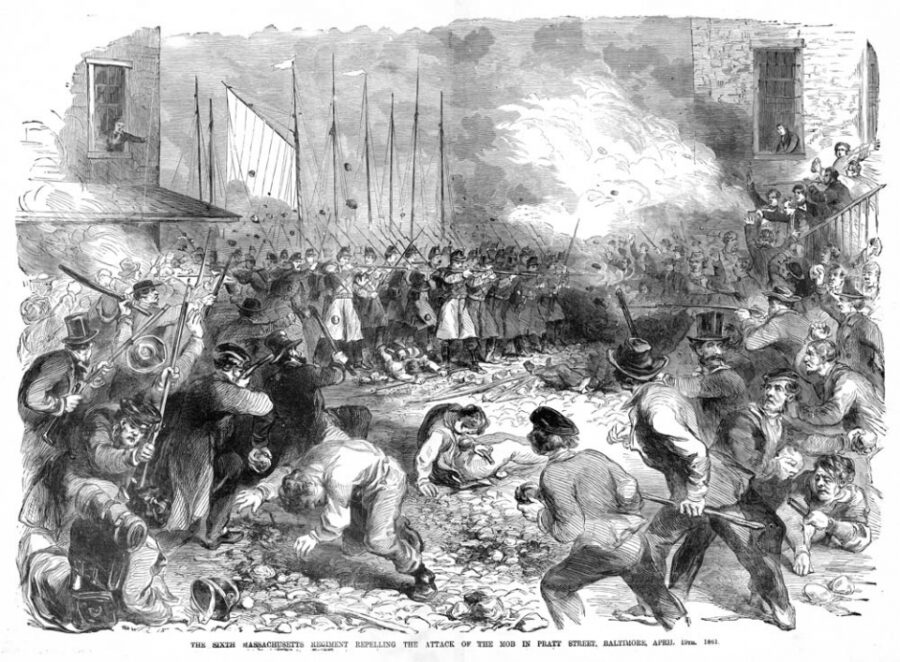
They would not make it there without a fight. Just one week after Sumter’s fall, Baltimore’s streets were soaked with blood. A pro-Confederate mob rushed the Sixth Massachusetts as they marched through the town en route to the capital. Sixteen died that day in a violent clash that would be remembered as the war’s first bloodshed.
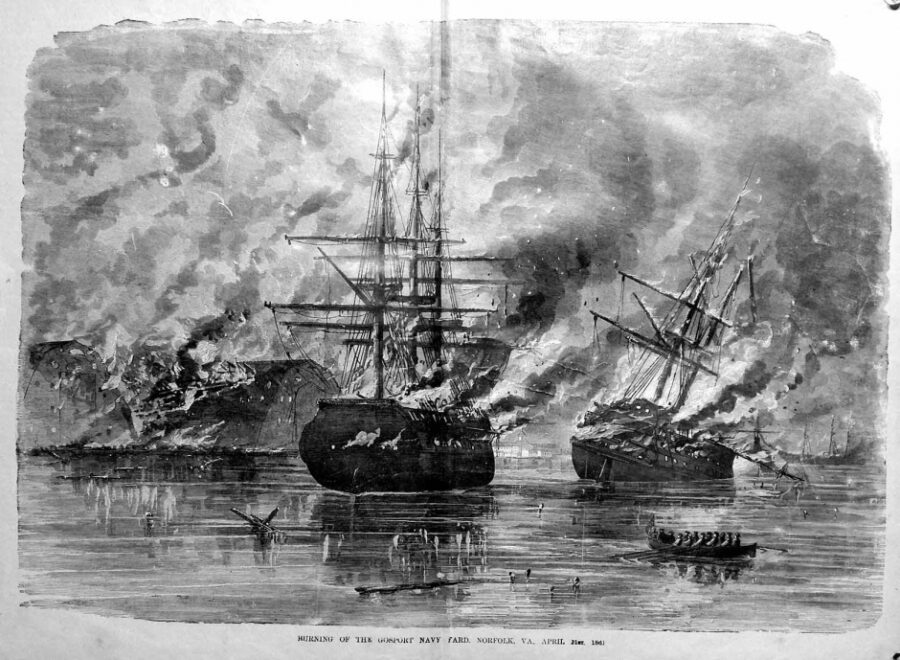
Throughout the nation preparations for impending violence continued. U.S. forces burned the Gosport Navy Yard in Portsmouth, Virginia, to prevent its ships from falling into Confederate hands.
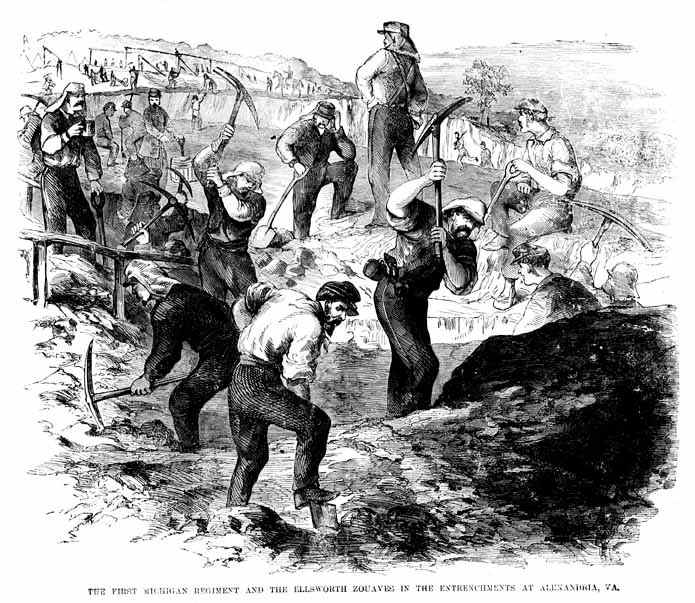
Just across the Potomac River (in plain sight of Washington D.C.) stood Alexandria, Virginia. Union troops moved in to take and fortify the town in May 1861, to protect both their capital and their president from Confederate attack.
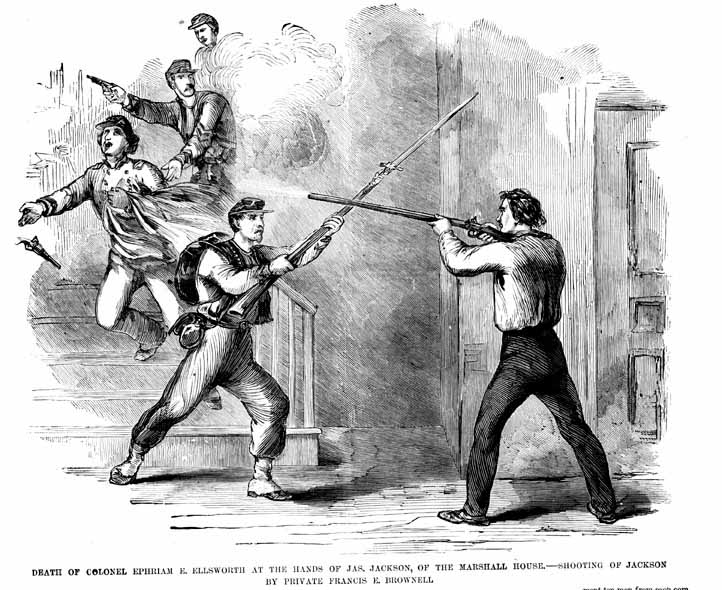
On May 24, a secessionist-sympathizing innkeeper killed 24-year-old Colonel Elmer E. Ellsworth as he attempted to remove a Confederate flag from the Marshall House in Alexandria. Ellsworth, a personal friend of Abraham Lincoln known nationally for his traveling Zouave militia drill team, was the conflict’s first prominent casualty. Little did anyone know at the time that over 600,000 more Union and Confederate soldiers would lose their lives before war’s end.

